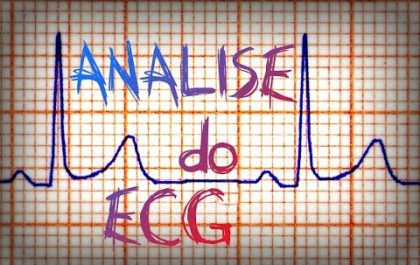Myocardial infarction is a major cause of death and disability worldwide. Coronary atherosclerosis is a chronic disease with stable and unstable periods. During unstable periods with activated inflammation in the vascular wall, patients may develop a myocardial infarction. Myocardial infarction may be a minor event in a lifelong chronic disease, it may even go undetected, but it may also be a major catastrophic event leading to sudden death or severe haemodynamic deterioration. A myocardial infarction may be the first manifestation of coronary artery disease, or it may occur, repeatedly, in patients with established disease. Information on myocardial infarction attack rates can provide useful data regarding the burden of coronary artery disease within and across populations, especially if standardized data are collected in a manner that demonstrates the distinction between incident and recurrent events. From the epidemio-logical point of view, the incidence of myocardial infarction in a population can be used as a proxy for the prevalence of coronary artery disease in that population. Furthermore, the term myocardial infarction has major psychological and legal implications for the individual and society. It is an indicator of one of the leading health problems in the world, and it is an outcome measure in clinical trials and observational studies. With these perspectives, myocardial infarction may be defined from a number of different clinical, electrocardiographic, biochemical, imaging, and pathological characteristics.
In the past, a general consensus existed for the clinical syndrome designated as myocardial infarction. In studies of disease prevalence, the World Health Organization (WHO) defined myocardial infarction from symptoms, ECG abnormalities, and enzymes. However, the development of more sensitive and specific serological biomarkers and precise imaging techniques allows detection of ever smaller amounts of myocardial necrosis. Accordingly, current clinical practice, health care delivery systems, as well as epidemiology and clinical trials all require a more precise definition of myocardial infarction and a re-evaluation of previous definitions of this condition.
It should be appreciated that over the years, while more specific biomarkers of myocardial necrosis became available, the accuracy of detecting myocardial infarction has changed. Such changes occurred when glutamine-oxaloacetic transaminase (GOT) was replaced by lactate dehydrogenase (LDH) and later by creatine kinase (CK) and the MB fraction of CK, i.e. CKMB activity and CKMB mass. Current, more specific, and sensitive biomarkers and imaging methods to detect myocardial infarction are further refinements in this evolution.
In response to the issues posed by an alteration in our ability to identify myocardial infarction, the European Society of Cardiology (ESC) and the American College of Cardiology (ACC) convened a consensus conference in 1999 in order to re-examine jointly the definition of myocardial infarction (published in the year 2000 in the European Heart Journal and Journal of the American College of Cardiology [1]). The scientific and societal implications of an altered definition for myocardial infarction were examined from seven points of view: pathological, biochemical, electrocardiographic, imaging, clinical trials, epidemiological, and public policy. It became apparent from the deliberations of the former consensus committee that the term myocardial infarction should not be used without further qualifications, whether in clinical practice, in the description of patient cohorts, or in population studies. Such qualifications should refer to the amount of myocardial cell loss (infarct size), to the circumstances leading to the infarct (e.g. spontaneous or procedure related), and to the timing of the myocardial necrosis relative to the time of the observation (evolving, healing, or healed myocardial infarction) (1).
Following the 1999 ESC/ACC consensus conference, a group of cardiovascular epidemiologists met to address the specific needs of population surveillance. This international meeting, representing several national and international organizations, published recommendations in Circulation 2003 (2). These recommendations addressed the needs of researchers engaged in long-term population trend analysis in the context of changing diagnostic tools using retrospective medical record abstraction. Also considered was surveillance in developing countries and out-of-hospital death, both situations with limited and/or missing data. These recommendations continue to form the basis for epidemiological research.
Given the considerable advances in the diagnosis and management of myocardial infarction since the original document was published, the leadership of the ESC, the ACC, and the American Heart Association (AHA) convened, together with the World Heart Federation (WHF), a Global Task Force to update the 2000 consensus document (1). As with the previous consensus committee, the Global Task Force was composed of a number of working groups in order to refine the ESC/ACC criteria for the diagnosis of myocardial infarction from various perspectives. With this goal in mind, the working groups were composed of experts within the field of biomarkers, ECG, imaging, interventions, clinical investigations, global perspectives, and implications. During several Task Force meetings, the recommendations of the working groups were coordinated, resulting in the present updated consensus document.
The Task Force recognizes that the definition of myocar-dial infarction will be subject to a variety of changes in the future as a result of scientific advance. Therefore, this document is not the final word on this issue for all time. Further refinement of the present definition will doubtless occur in the future.
Clinical Features of Ischaemia. The term myocardial infarction reflects cell death of cardiac myocytes caused by ischaemia, which is the result of a perfusion imbalance between supply and demand. Ischaemia in a clinical setting most often can be identified from the patient’s history and from the ECG. Possible ischaemic symptoms include various combinations of chest, upper extremity, jaw, or epigastric discomfort with exertion or at rest. The discomfort associated with acute myocardial infarction usually lasts at least 20 min. Often, the discomfort is diffuse, not localized, not positional, not affected by movement of the region, and it may be accompanied by dyspnoea, diaphoresis, nausea, or syncope.
These symptoms are not specific to myocardial ischaemia and can be misdiagnosed and thus attributed to gastrointestinal, neurological, pulmonary, or musculoskeletal disorders. Myocardial infarction may occur with atypical symptoms, or even without symptoms, being detected only by ECG, biomarker elevations, or cardiac imaging.
Pathology. Myocardial infarction is defined by pathology as myocardial cell death due to prolonged ischaemia. Cell death is categorized pathologically as coagulation and/or contraction band necrosis, which usually evolves through oncosis, but can result to a lesser degree from apoptosis. Careful analysis of histological sections by an experienced observer is essential to distinguish these entities (1).
After the onset of myocardial ischaemia, cell death is not immediate but takes a finite period to develop (as little as 20 min or less in some animal models). It takes several hours before myocardial necrosis can be identified by macroscopic or microscopic post-mortem examination. Complete necrosis of all myocardial cells at risk requires at least 2–4 h or longer depending on
the presence of collateral circulation to the ischaemic zone, persistent or intermittent coronary arterial occlusion, the sensitivity of the myocytes to ischaemia, pre-conditioning, and/or, finally, individual demand for myocardial oxygen and nutrients. Myocardial infarctions are usually classified by size: microscopic (focal necrosis), small (<10% of the left ventricular [LV] myocardium), moderate (10–30% of the LV myocardium), and large (>30% of the LV myocardium), and by location. The pathological identification of myocardial necrosis is made without reference to morphological changes in the coronary arterial tree or to the clinical history (1).
Myocardial infarction can be defined pathologically as acute, healing, or healed. Acute myocardial infarction is characterized by the presence of polymorphonuclear leukocytes. If the time interval between the onset of the infarction and death is quite brief, e.g. 6 h, minimal or no polymorphonuclear leukocytes may be seen. The presence of mononuclear cells and fibroblasts, and the absence of polymorphonuclear leukocytes characterize healing infarction. Healed infarction is manifested as scar tissue without cellular infiltration. The entire process leading to a healed infarction usually takes at least 5–6 weeks. Reperfusion may alter the macroscopic and microscopic appearance of the necrotic zone by producing myocytes with contraction bands and large quantities of extravasated erythrocytes. Myocardial infarctions can be classified temporally from clinical and other features, as well as according to the pathological appearance, as evolving (<6 h), acute (6 h–7 days), healing (7–28 days), and healed (29 days and beyond). It should be emphasized that the clinical and electrocardiographic timing of the onset of an acute infarction may not correspond exactly with the pathological timing. For example, the ECG may still demonstrate evolving ST-T changes and cardiac biomarkers may still be elevated (implying a recent infarct) at a time when pathologically the infarction is in the healing phase (1).
Patients who suffer sudden cardiac death with or without ECG changes suggestive of ischaemia represent a challenging diagnostic group. Since these individuals die before pathological changes can develop in the myocardium, it is difficult to say with certainty whether these patients succumbed to a myocardial infarction or to an ischaemic event that led to a fatal arrhythmia. The mode of death in these cases is sudden, but the aetiology remains uncertain unless the individual reported previous symptoms of ischaemic heart disease prior to the cardiac arrest. Some patients with or without a history of coronary disease may develop clinical evidence of ischaemia, including prolonged and profound chest pain, diaphoresis and/or shortness of breath, and sudden collapse. These individuals may die before blood samples for biomarkers can be obtained, or these individuals may be in the lag phase before cardiac biomarkers can be identified in the blood. These patients may have suffered an evolving, fatal, acute myocardial infarction. If these patients present with presumably new ECG changes, for example ST elevation, and often with symptoms of ischaemia, they should be classified as having had a fatal myocardial infarction even if cardiac biomarker evidence of infarction is lacking. Also, patients with evidence of fresh thrombus by coronary angiography (if performed) and/or at autopsy should be classified as having undergone sudden death as a result of myocardial infarction.
Artigos relacionados
Veja também
Medicamentos para emagrecer são seguros para o coração?
Atualmente temos alguns medicamentos aprovados pela ANVISA para tratar a obesidade no Brasil, como o Orlistat, Sibutramina, Liraglutida e Semaglutida. Orlistat (Lipiblock, Xenical) 1- Atua inibindo a absorção de parte da gordura dos alimentos. 2- Não apresenta efeitos sobre o sistema cardiovascular, logo, pode ser…
Alteração difusa da repolarização ventricular (ADRV)
O termo alteração difusa de repolarização ventricular é utilizado em laudos de eletrocardiograma (ECG) para descrever alterações do segmento ST do ECG, como ausência, achatamento ou inversões assimétricas das ondas T. Alguns médicos podem empregar a abreviatura ADRV. A onda T é um dos elementos…
Holter (eletrocardiografia dinâmica de 24 horas)
Norman Holter foi um biofísico norte-americano que inventou o monitor Holter em 1949, um aparelho portátil para a monitorização contínua da atividade elétrica do coração por 24 horas ou mais (eletrocardiografia dinâmica). Para a monitorização contínua do traçado eletrocardiográfico é necessário colocar eletrodos na parede…
Cinco bons motivos para você fazer seu check-up cardiológico
Abaixo enumeramos cinco bons motivos para as pessoas realizarem um check-up cardiológico: 1-Prevenção e Detecção Precoce: o check-up cardiológico é essencial para prevenir doenças cardiovasculares e detectar problemas de saúde cardíaca em estágios iniciais. A avaliação médica regular pode identificar fatores de risco, como hipertensão,…





